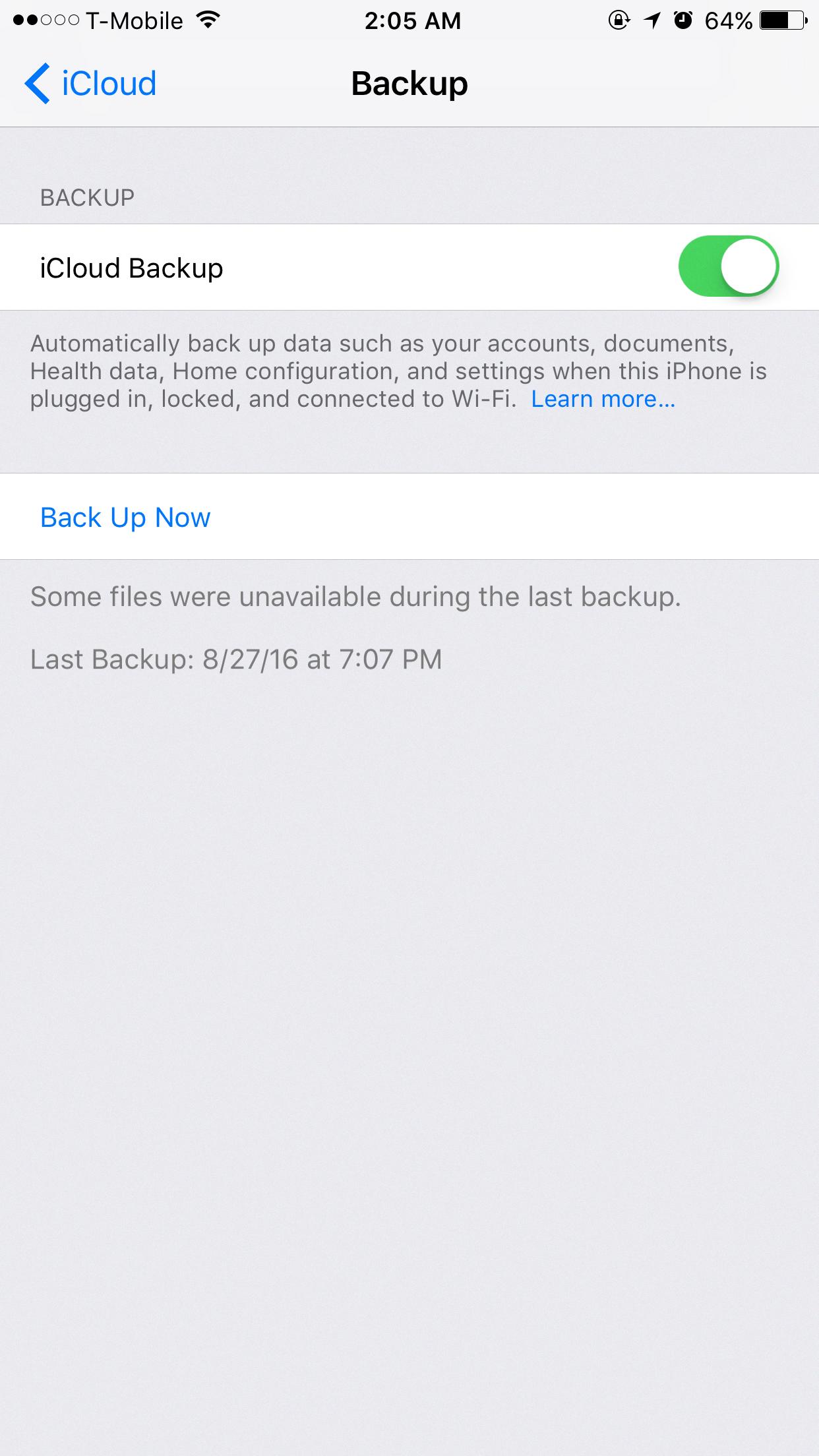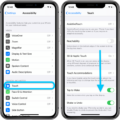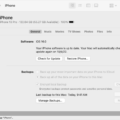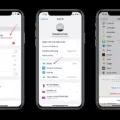When it comes to backing up your files, encountering the error message “some files were unavailable during the last backup” can be frustrating and worrisome. This error usually occurs when certain files are open or being accessed by other applications during the backup process. In this article, we will explore the possible causes of this error and provide some solutions to help you resolve it.
One common reason for encountering this error is having multiple apps running in the background while attempting to back up your files. When you initiate a backup, the backup process requires exclusive access to the files it is trying to copy. If any of these files are already open or being used by another application, they become inaccessible during the backup process, resulting in the error message.
To avoid this issue, it is advisable to close all unnecessary apps and programs before starting the backup process. This ensures that the files being backed up are not being accessed by any other applications, allowing the backup process to proceed smoothly without any interruptions.
Another factor that can contribute to this error is the presence of security software on your computer. If you are using a Windows PC and encounter issues with iTunes not responding or the backup process never finishing, it might be due to your security software interfering with the backup process. In such cases, it is recommended to update, change, disable, or uninstall the security software to resolve the issue.
If you have access to multiple computers, you can also try making the backup on a different Mac or PC. Sometimes, the issue may be specific to a particular device or computer, and using an alternative system can help overcome the problem.
Alternatively, you can utilize iCloud to back up your device and restore from the iCloud backup. This eliminates the need for a computer-based backup and allows you to securely store your files and data in the cloud.
In situations where the iPhone backup fails due to insufficient space in iCloud, you can take steps to manage your iCloud storage and reduce the backup size. One effective method is to delete unnecessary data, such as old photos, from your iCloud storage. High-quality photos can consume a significant amount of storage space, and removing them can free up valuable storage for your backup.
To delete iCloud photos, you can use alternative methods such as transferring them to your computer or using third-party apps specifically designed for managing iCloud photos. By reducing the amount of data stored in your iCloud backup, you can ensure that you have enough space to successfully complete the backup process.
Encountering the “some files were unavailable during the last backup” error can be frustrating, but with the right approach, it can be resolved. By closing unnecessary apps, managing your security software, using alternative backup options, and managing your iCloud storage, you can overcome this error and ensure successful backups of your important files and data.
What Does It Mean When It Says Some Files Were Unavailable During The Last Backup?
When you see the message “some files were unavailable during the last backup,” it means that certain files on your device were not able to be included in the backup process. This can occur due to various reasons, but one common cause is that these files were open or in use by other applications while the backup was being performed.
Here are some possible explanations for this error message:
1. File in use by another app: If a file you are trying to back up is already open in another app, it becomes inaccessible during the backup process. This can happen with documents, images, or any other type of file.
2. Network or connectivity issues: If there are network interruptions or connectivity problems during the backup process, some files may not be successfully backed up. This can occur if your device loses internet connection or if there are issues with your Wi-Fi or cellular network.
3. Insufficient storage space: If your device does not have enough available storage space to accommodate the backup, certain files may be excluded. This can happen if you have a large amount of data or if you have not cleared up enough space on your device.
4. File permissions: Some files may have restricted permissions that prevent them from being backed up. This can occur if the files are protected or encrypted, or if they have specific access settings that restrict their backup.
To resolve this issue and ensure that all your files are included in the backup, you can try the following steps:
– Close any apps or programs that may be using the files you want to back up.
– Check your network connection and ensure that you have a stable internet connection.
– Make sure you have enough available storage space on your device for the backup.
– Verify the permissions of the files you want to back up and adjust them if necessary.
By addressing these potential causes, you can increase the chances of a successful backup without encountering the “some files were unavailable during the last backup” error.

Why is Your iPhone Backup Not Finishing?
There could be several reasons why your iPhone backup is not finishing. Here are some possible causes:
1. Insufficient storage space: If your device does not have enough free space, the backup process may not complete. Make sure you have enough storage available on your iPhone and on your computer or iCloud account.
2. Slow internet connection: If you are backing up your iPhone using iCloud, a slow or unstable internet connection can cause the backup process to stall or fail. Check your internet connection and try again in a location with a stronger signal.
3. Outdated software: Ensure that you are using the latest version of iOS on your iPhone and the latest version of iTunes on your computer. Outdated software can sometimes cause compatibility issues and prevent backups from completing.
4. Corrupted backup files: If a previous backup file on your computer or iCloud account is corrupted, it can interfere with the current backup process. Try deleting any old backup files and then attempt a new backup.
5. Large backup size: If your iPhone contains a large amount of data, such as photos, videos, or apps, the backup process may take a long time to complete. Be patient and allow sufficient time for the backup to finish.
6. Security software interference: Some security software, such as antivirus or firewall programs, can interfere with the backup process. Temporarily disable or configure your security software to allow iTunes or iCloud to complete the backup.
7. Hardware issues: In rare cases, hardware problems with your iPhone or computer can cause backup failures. Try connecting your iPhone to a different computer or using a different cable to see if the issue persists.
If none of these solutions work, it is recommended to contact Apple Support for further assistance.
What to Do If iPhone Backup Failed You Don’t Have Enough Storage?
If your iPhone backup failed due to insufficient storage, there are several steps you can take to resolve the issue:
1. Delete unneeded data on iCloud:
– Go to Settings on your iPhone and tap on your Apple ID.
– Select iCloud and then Manage Storage.
– Review the apps and data listed under “Backups” and delete any that are no longer needed or important.
– Tap on the specific app and select Delete Data to remove it from your iCloud backup.
2. Reduce iPhone backup size:
– Go to Settings on your iPhone and tap on your Apple ID.
– Select iCloud and then Manage Storage.
– Tap on Backups and then your device’s name.
– Disable the backup for apps or data that you don’t need to include in your backup.
– You can also toggle off the switch for apps that you don’t use frequently or have other means of backing up.
3. Optimize iCloud Photo Library:
– Go to Settings on your iPhone and tap on your Apple ID.
– Select iCloud and then Photos.
– Enable the “Optimize iPhone Storage” option. This will automatically reduce the size of photos on your device, storing full-resolution versions in iCloud.
4. Delete iCloud photos:
– Open the Photos app on your iPhone.
– Tap on “Albums” at the bottom and select “All Photos”.
– Scroll through your photos and delete any that you no longer need or want to keep.
– Deleted photos will be moved to the “Recently Deleted” album, where they will be permanently deleted after 30 days.
By following these steps, you should be able to free up space on iCloud and reduce the size of your iPhone backup, allowing you to successfully backup your device without any storage issues.
Why Was Your Backup Incomplete?
There could be several reasons why your backup in Google Drive was incomplete. Here are some possible explanations:
1. Insufficient storage space: If your Google Drive storage is full or nearing its limit, it may prevent files from being completely uploaded. Check your storage status in Google Drive settings and consider upgrading to a larger storage plan if needed.
2. Slow internet connection: If your internet connection was weak or unstable while the backup was in progress, it could have interrupted the upload process and resulted in an incomplete backup. Ensure you have a stable internet connection before attempting another backup.
3. Large file size: Google Drive has a file size limit for individual files. If your backup includes files that exceed this limit (currently 5TB for most files), they may not upload completely. Consider compressing large files or using alternative backup methods for such files.
4. File synchronization issues: If you have enabled file synchronization between your device and Google Drive, any issues with the sync process can lead to incomplete backups. Check if there are any sync errors or conflicts reported in the Google Drive app or on your device.
5. App or device-related issues: Occasionally, app or device-specific issues can cause backups to be incomplete. Ensure that you have the latest version of the Google Drive app installed on your device and check for any pending updates. Restarting your device or reinstalling the app may also help resolve any temporary glitches.
Remember, it’s always a good practice to regularly check your backups to ensure they are complete and up to date. Additionally, consider using multiple backup methods or services to minimize the risk of data loss.
Conclusion
Encountering the “some files were unavailable during the last backup” error can be frustrating, but there are several possible reasons for this issue. One common reason is having multiple apps open in the background, which can hinder the backup process and make certain files inaccessible. It is important to ensure that the files you are trying to back up are not already open in another app.
If you are using a Windows PC and experiencing issues with iTunes, it may be necessary to update, change, disable, or uninstall your security software. Additionally, if you have multiple computers, you can try making a backup on a different device or utilize iCloud for backing up and restoring your device.
Another situation that can lead to backup failure is not having enough space in iCloud. In this case, it is recommended to delete unnecessary data or reduce the size of your iPhone backup. One way to free up space is by deleting iCloud photos, as they can consume a significant amount of storage due to their high quality. Although you cannot view these photos directly on your iPhone, there are alternative methods to view or delete them.
Lastly, incomplete uploads on Google Drive can be caused by an unsafe update on your Android phone. It is advisable to update Google Drive to the latest version through the Google Play Store app. If the app has not been updated for a while, deleting the current version and reinstalling it can also resolve the issue.
By addressing these various factors, you can troubleshoot and resolve issues related to files, ensuring successful backups and efficient use of storage space.








